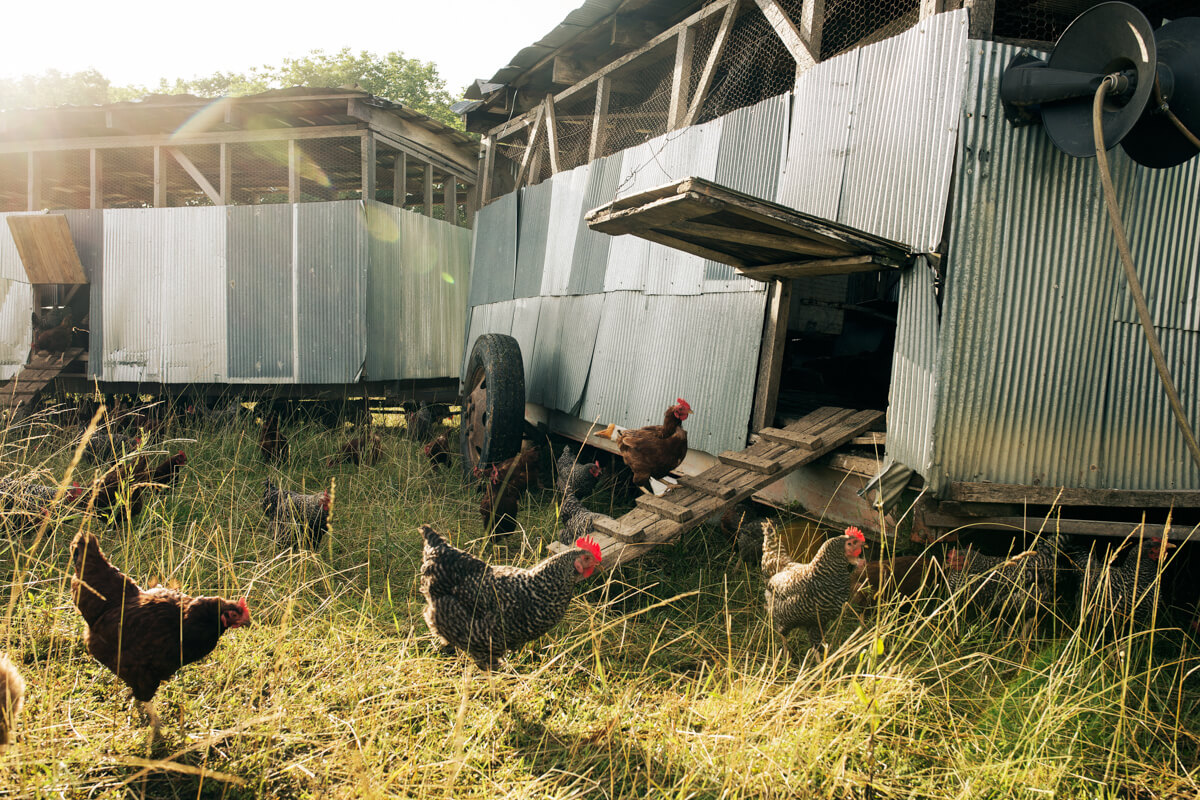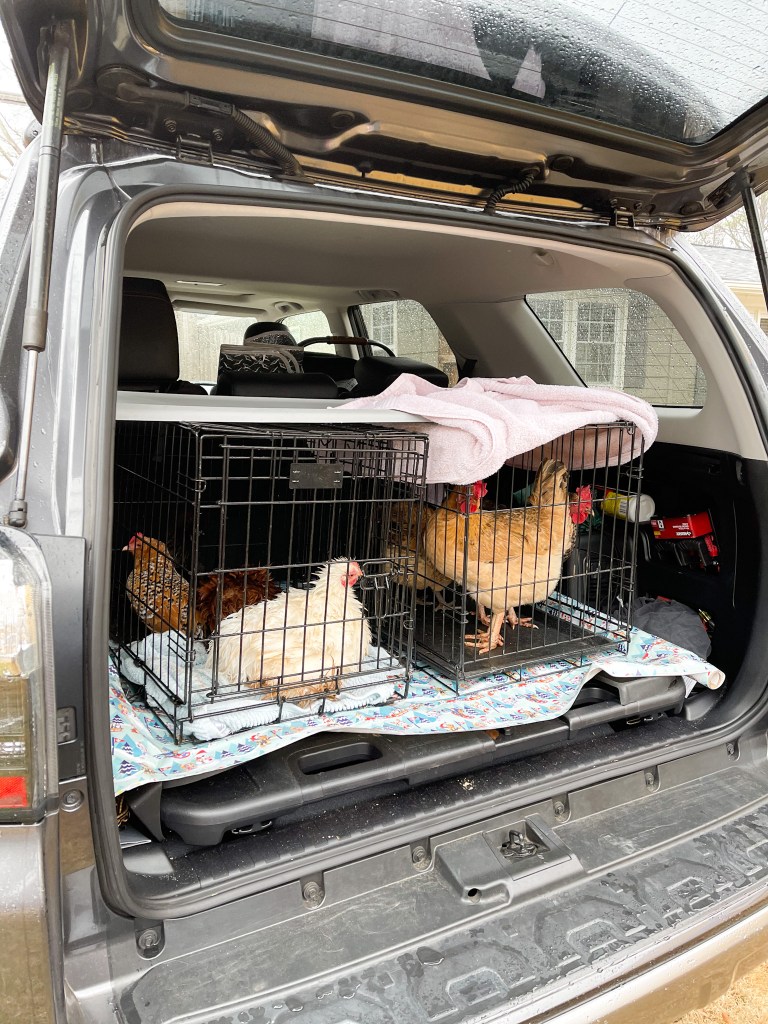Are you preparing to move your chickens to a new coop? If so, you’re not alone. Many chicken owners find themselves in this situation at some point, and it can be both stressful and rewarding. Fortunately, with the right preparation and knowledge, moving chickens to a new coop can be a successful, safe, and enjoyable experience. In this article, we’ll provide a step-by-step guide to moving chickens to a new coop, along with some expert tips for chicken husbandry.
Why Move Chickens to a New Coop?

There are a variety of reasons why chicken owners may need to move their chickens to a new coop. Most commonly, it is due to damage to the current coop, outgrowing the current coop, needing an upgrade to better suit the chickens’ needs, or wanting to move the chickens to a new location. Regardless of the reason, the process of moving chickens to a new coop requires some preparation and knowledge of best practices.
Reasons to Move Chickens to a New Coop:
| Reason | Description |
|---|---|
| Damage to Coop | If the current coop is damaged due to wear and tear or a natural disaster, it may be necessary to move the chickens to a new location. |
| Outgrowing Coop | If the current coop is too small to meet the needs of the flock, it may be necessary to move the chickens to a larger coop. |
| Needs Upgrade | If the current coop is not meeting the chickens’ needs, it may be necessary to move the chickens to a different coop that is better suited for their needs. |
| Moving Location | If the current location of the coop is no longer suitable, it may be necessary to move the chickens to a new location. |
Regardless of why a chicken owner may need to move their chickens to a new coop, it is important to take the necessary steps to ensure a smooth transition. This includes preparing the new coop, introducing the chickens to the new coop, and getting the chickens used to their new environment.
By taking the time to move chickens to a new coop, chicken owners can ensure their chickens are safe, comfortable, and happy in their new home.
Preparation Before Moving Chickens

Supplies Needed
Before moving your chickens to their new coop, ensure that you have the necessary supplies on hand. You will need a secure cage to transport the chickens, a straw bale or cardboard box to provide them with a comfortable bed, feed and water dishes, and any additional supplies that you may find helpful. Additionally, make sure you have cleaning supplies on hand to sanitize the coop and any accessories.
Cleaning and Disinfecting the New Coop
Before moving your chickens to a new coop, it is important to thoroughly clean and disinfect the area. Remove all debris and dirt from the coop and its accessories, and use a cleaning solution to sanitize the area. If possible, it is recommended to use a natural disinfectant, such as a vinegar-water mixture, to avoid exposing your chickens to harsh chemicals. Once the coop is clean and dry, it is ready for your chickens to move in.
Gently Moving the Chickens

Getting the Chickens Ready to Move
To reduce stress on the chickens, it’s important to properly prepare them for the move. Start by familiarizing them with the new coop. Introduce the chickens to the new environment by placing the coop near their existing one. This will help them build a comfort level with their new home.
Allow the chickens to explore the new coop and become familiar with the new surroundings before attempting to move them.
Transferring the Chickens
Once the chickens are comfortable in the new coop, it’s time to move them. Begin by gathering the chickens into one area and placing them in a secure container. Make sure the container is well-ventilated. Secure the lid with a latch or rope and make sure the lid is secure.
Carefully lift the container and transport it to the new coop. Once in the new coop, open the lid and allow the chickens to explore the new environment. The chickens may be a bit hesitant to explore, so give them a few days to adjust before introducing them to other chickens.
Getting the Chickens Used to the New Coop
Ensuring the Chickens are Well Fed
Providing a consistent and appropriate diet is essential for a chicken’s well-being. Ensure that you are providing a balanced diet with all the necessary nutrients, vitamins and minerals for a healthy, happy chicken. Feed the chickens in their new coop so they become familiar with the space and recognize it as a safe place.
Making the New Coop Feel like Home
Provide familiar items in the new coop, such as nesting boxes and roosts. Place the nesting boxes somewhere that is easy for the chickens to find and use. Make sure the roosts are low enough that the chickens can easily reach them. Place a few familiar objects in the coop, such as a toy or a piece of fabric, that will remind the chickens of their old home.
Introducing New Chickens
If you are moving in new chickens, make sure to introduce them to the existing flock slowly and carefully. Start by introducing the chickens to each other through a fence. This will help them get to know each other without getting too close. Once the chickens are more comfortable with each other, move them to a larger space for a few days so they can become more familiar with one another. Finally, move the chickens to the new coop and monitor them closely to ensure they all get along.
Following these steps will help the chickens get used to their new home and ensure they are happy and healthy.
Frequently Asked Questions
How often should I move my chickens to a new coop?
Chickens should be moved to a new coop every 6-12 months:
- Moving chickens to a new coop allows them to access fresh forage and explore new environments.
- A new coop will provide added protection from predators and parasites.
- Moving to a new coop will also help to reduce stress levels and improve egg production.
- Finally, it is important to move chickens to a new coop to help prevent the spread of disease.
It is best to move chickens to a new coop every 6-12 months in order to maximize the health and happiness of your flock.
What is the Best Way to Ensure a Stress-Free Move for My Chickens?
- Prepare in Advance: Plan out the move in advance and make sure you have all the necessary supplies, such as a coop, feed, water, and bedding, as well as a transport crate or carrier.
- Make the Move During the Day: Moving chickens during the day helps them adjust to the new space more easily.
- Introduce the New Coop Gradually: Allow the chickens to explore the new coop gradually, starting with the entrance and then going inside.
- Limit Stressful Stimuli: To limit stress, avoid loud noises and sudden movements during the move.
- Provide Comfort: Provide comfort items for the chickens, such as favorite treats, familiar nesting materials, and perches.
- Observe the Chickens: Pay close attention to the chickens during the move, and watch for signs of stress or illness.
How can I make sure that the chickens are comfortable in their new coop?
- Provide plenty of fresh air: Make sure that the coop has adequate ventilation to keep the air fresh and free of moisture and other contaminants.
- Choose the right size: The chickens should have enough space to move around and stretch their wings.
- Keep the coop clean: Ensure that the coop is cleaned regularly to prevent the buildup of bacteria and other harmful organisms.
- Provide ample bedding: Provide soft and absorbent bedding material to keep the chickens comfortable and to help regulate their body temperature.
- Provide enough perches: Provide enough perches for the chickens to rest and sleep on.
- Provide enough food and water: Make sure that the chickens have access to enough food and clean water at all times.
- Monitor temperature: Keep the coop at an optimal temperature to ensure that the chickens are comfortable.
What are some signs that chickens are not adjusting well to the new coop?
- Stress – Chickens may exhibit signs of stress such as feather picking, aggression towards other chickens, and frequent vocalizations.
- Lack of Appetite – Chickens may stop eating or drink less water than usual.
- Unusual Behavior – Chickens may seem scared or disoriented in the new coop and may try to escape more frequently.
- Feather Loss – Chickens may lose feathers due to stress or the coop not being properly set up.
- Aggressive Pecking – Chickens may become aggressive and start pecking at each other, which can lead to injury.
Are there any special considerations for moving chickens during the winter months?
Temperature: Moving chickens during the winter months means cold temperatures and potential snow or ice. It is important to ensure that the chickens have access to a warm and dry area, either in the coop or in a heated transport vehicle.
Feed: Chickens need more feed during the winter months to maintain their energy levels. Make sure to bring the proper amount of feed and supplements to ensure the chickens’ well-being during the move.
Light: During the winter months, chickens need more light to keep them healthy and productive. Make sure to provide additional lighting to the coop or to the transport vehicle.
Bedding: An extra layer of bedding is important to keep the chickens warm and comfortable during the winter months. Provide an extra layer of bedding in the coop and the transport vehicle.
Ventilation: Proper ventilation is essential for chickens during the winter months. Make sure to provide adequate airflow to the coop and the transport vehicle.
Conclusion
Moving chickens to a new coop is an easy process, but it is important to do it correctly to ensure that the birds settle in quickly and safely. With the right preparation and knowledge, the transition will be smooth and stress-free. Prior to the move, it is important to plan ahead, inspect the new space, and use appropriate materials to safely transport the birds. Following these basic steps will help ensure a successful move and healthy chickens.
